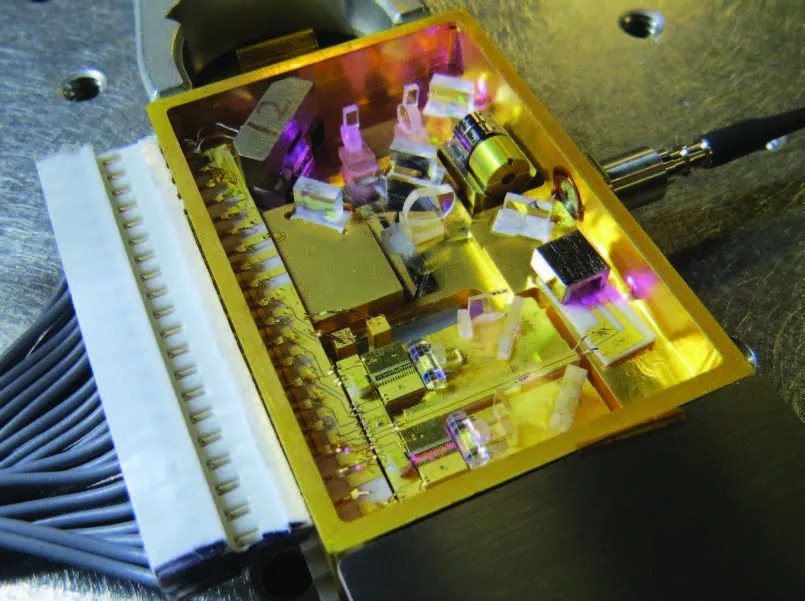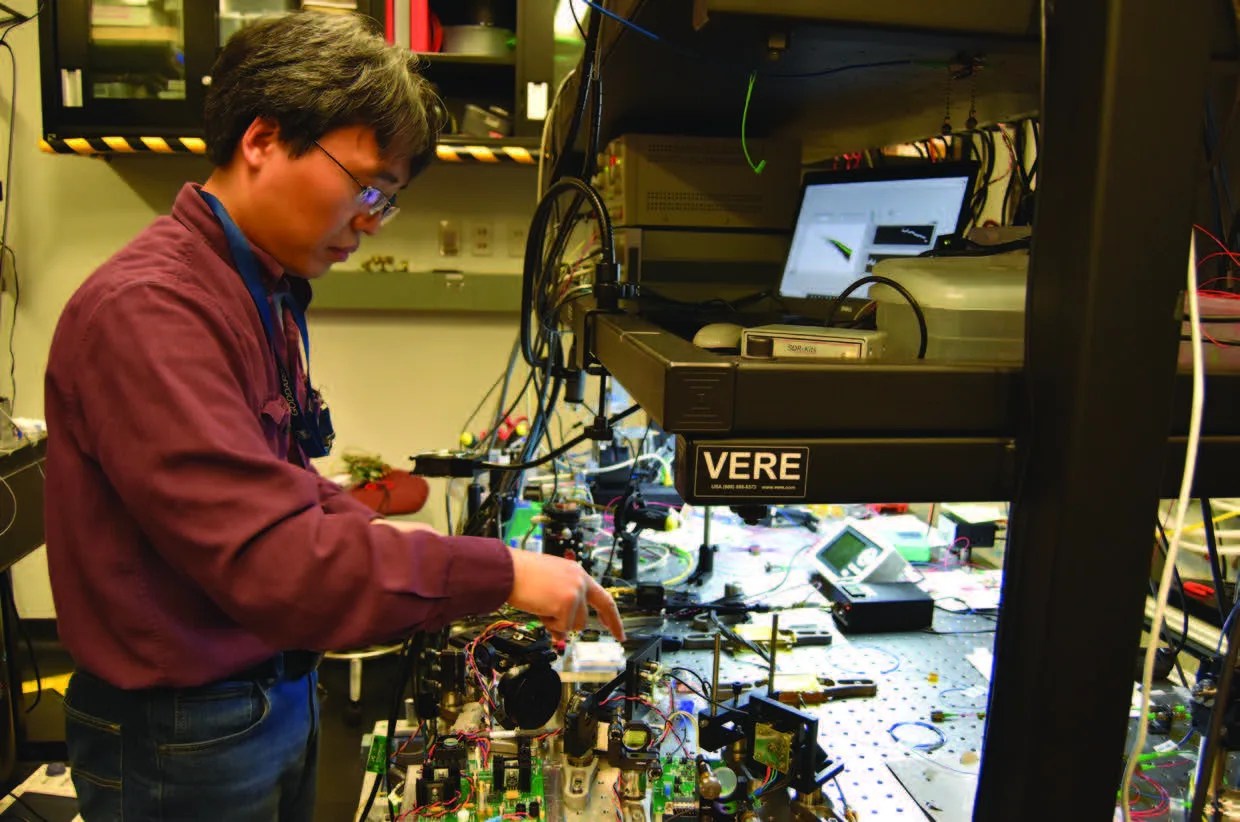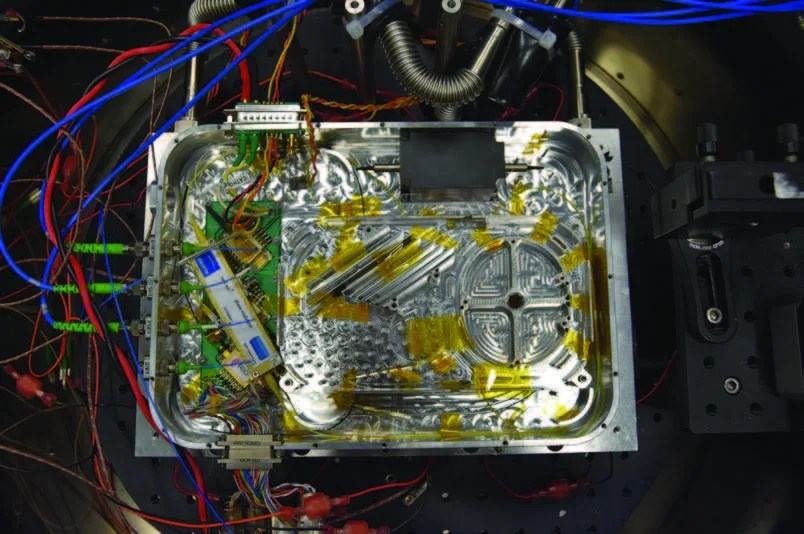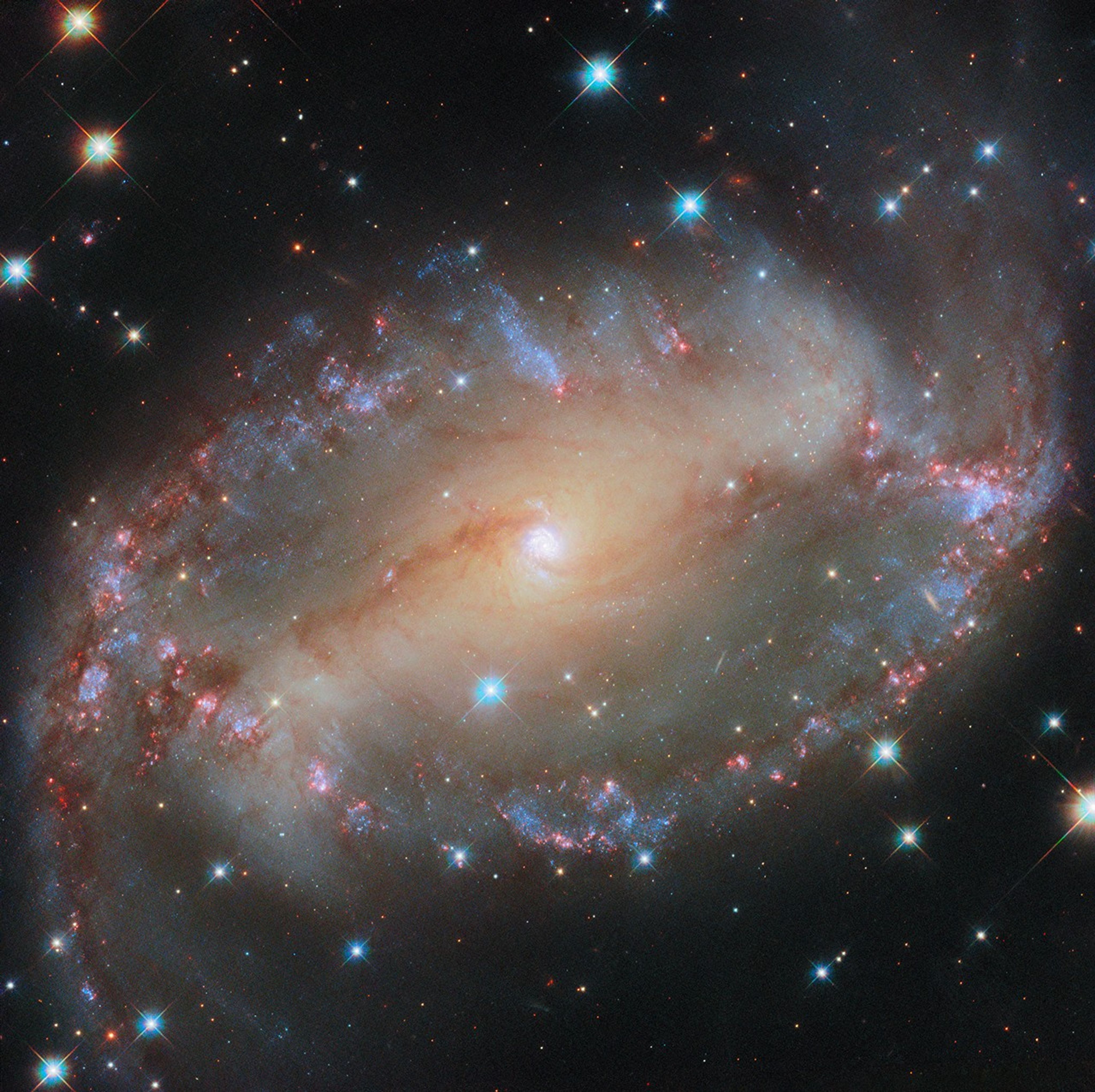4 min read
PROJECT
Laser Transmitter for the Laser Interferometer Space Antenna (LISA) Mission
KEY POINTS
A highly stable and robust laser design is a key subsystem required for the LISA observatory. By leveraging lessons learned from previous missions and the latest technologies in photonics packaging and reliability engineering, NASA is developing a master oscillator power amplifier laser transmitter to meet the challenging LISA requirements.

What happens when two black holes that are each a million times bigger than our Sun collide? NASA and the European Space Agency are jointly developing the Laser Interferometer Space Antenna (LISA) to tell us more about the gravitational waves produced by such astronomical phenomena.
LISA will consist of three spacecraft flying in a constellation, each separated by 2.5 million km. Gravitational waves are incredibly elusive; to detect them scientists will need to track changes in the separation of the three LISA spacecraft with amazing precision—just a few picometers, a dimension smaller than the size of a hydrogen atom. A team at NASA GSFC is developing a new laser system to meet this challenge.
The laser system is one of the most important subsystems of the LISA measurement system, since it will provide the light used to make the sensitive interferometric distance measurement between the spacecraft. Over the past four years, a team at NASA GSFC has been developing a highly stable and robust laser system for the LISA mission. NASA’s baseline architecture for the LISA laser is a master oscillator power amplifier (MOPA) laser transmitter. As the name suggests, the MOPA architecture entails two major subsystems: (1) the master oscillator (MO), a lower power laser that meets majority of the laser requirements except power; and (2) the power amplifier (PA), which boosts the low output power of the MO to the required power without imparting additional noise.

The NASA team has designed the LISA laser system to satisfy the familiar mass, power, and radiation hardness requirements for space-based lasers. But LISA also has some unique requirements arising from its role in the interferometric measurement system. It must have exquisite stability in both wavelength (which requires active stabilization using a high finesse optical cavity) and intensity (which requires active stabilization for long-term drifts and quantum-limited performance over short time scales). In addition, the laser must be robust enough to survive 16 years of operation, from early ground testing through the extended mission phase.
The GSFC design goal is to minimize the MO size, weight, and power but have enough optical power to properly seed a single-stage power amplifier. The design also minimizes the number of components in the laser, but allows proper derating and built-in redundancy to meet mission requirements. To achieve these goals, the GSFC team designed a custom micro non-planar ring oscillator (mNPRO) laser.
The unique LISA requirements make evaluation of the laser performance challenging. To enable testing of these lasers, the GSFC team built a laser characterization infrastructure that differs from those found in industry, other Government labs, or academia. These in situ test capabilities provide important advantages including time savings, cost savings, and improved ability to meet compliance requirements.

Recently, the team completed assembly of the first-generation mNPRO MO laser, which leverages the latest telecommunications packaging techniques for assembling electro-optics components such as the laser diodes, laser crystals, thermoelectric coolers, etc. The team also initiated the next-generation design, with a target date of completing laboratory testing by the end of summer 2019. In addition, team members built and successfully demonstrated a PA that meets the LISA functional requirements and are preparing it for space flight qualification in a year’s time.
In the next two years, the GSFC laser team will continue work on the U.S. laser system for LISA, including: (1) packaging and full performance testing of the new mNPRO design, (2) PA architecture evaluation and selection, (3) reliability testing of the laser system and components to show compliance with the 16-year LISA lifetime requirement, and (4) demonstration of noise and locking performance when combined with other subsystems. Delivery of a form, fit, and functional laser to the European Space Agency (ESA) for test is scheduled for early 2020 and the team plans to provide a fully space-qualified MOPA laser by mid-2021.
SPONSORING ORGANIZATION
Astrophysics Division’s PCOS Program
PROJECT LEAD
Dr. Anthony Yu, GSFC







